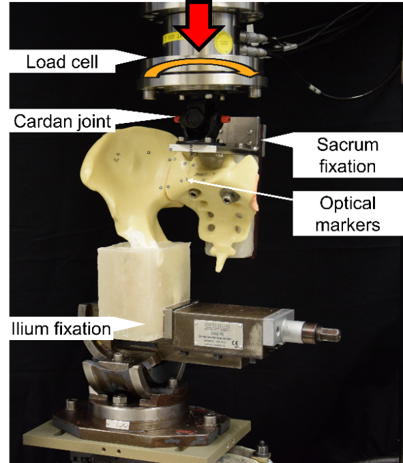Biomechanical evaluation of a new concept for screw-in-screw fixation of fragility sacrum fractures (SacrumFix)
Background
Surgical treatment of fragility sacrum fractures with percutaneous sacroiliac (SI) screw fixation is associated with high failure rates of screw loosening, cut-through and turn-out. The latter is a common cause for complications, being detected in up to 14% of the patients.
Goal
To develop a new screw-in-screw concept and prototype implant for fragility sacrum fracture fixation and test it biomechanically versus transsacral and SI screw fixations.
Results
Twenty-seven artificial pelves with discontinued symphysis and a vertical osteotomy in zone 1 after Denis were assigned to 3 study groups, fixed with either a transsacral screw, a SI screw, or the new screw-in-screw implant, and biomechanically tested using validated setup and test protocol for application of complex axial and torsional loading to failure. Interfragmentary movements and implant motions in terms of pull-out, cut-through, tilt, and turn-out were significantly higher for SI screw fixation compared to both transsacral screw and screw-in-screw fixations. In addition, transacral screw and screw-in-screw fixations revealed similar construct stability. Moreover, screw-in-screw fixation successfully prevented turning-out of the implant, that remained at 0° rotation around the nominal screw axis during testing for all specimens.
-
Publication
Kamer L, Noser H, Arand C, Handrich K, Rommens PM, Wagner D. Artificial Intelligence and CT-based 3D statistical modeling to assess trans-sacral corridors and plan implant positioning. J Orthop Res. 2021;epub Feb 15. https://doi.org/10.1002/jor.25010
-
Partner
Acklin Y (MD), University Hospital Basel, Basel, Switzerland
Rommens P (Prof), University Medical Center Mainz, Mainz, Germany
Wagner D (MD), University Medical Center Mainz, Mainz, Germany


